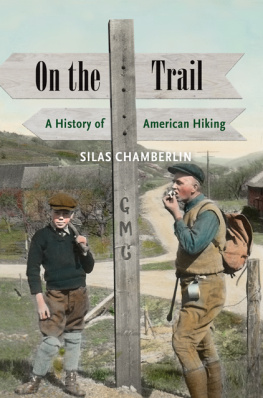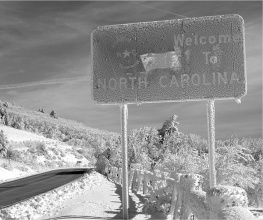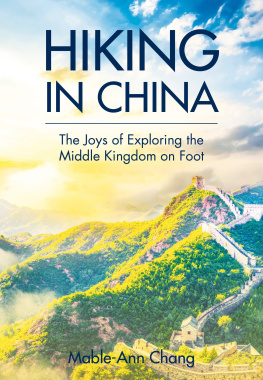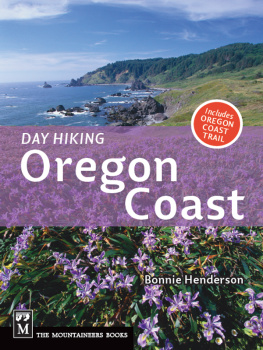Chamberlin - On the trail: a history of American hiking
Here you can read online Chamberlin - On the trail: a history of American hiking full text of the book (entire story) in english for free. Download pdf and epub, get meaning, cover and reviews about this ebook. City: New Haven;United States, year: 2016, publisher: Yale University Press, genre: Science. Description of the work, (preface) as well as reviews are available. Best literature library LitArk.com created for fans of good reading and offers a wide selection of genres:
Romance novel
Science fiction
Adventure
Detective
Science
History
Home and family
Prose
Art
Politics
Computer
Non-fiction
Religion
Business
Children
Humor
Choose a favorite category and find really read worthwhile books. Enjoy immersion in the world of imagination, feel the emotions of the characters or learn something new for yourself, make an fascinating discovery.
- Book:On the trail: a history of American hiking
- Author:
- Publisher:Yale University Press
- Genre:
- Year:2016
- City:New Haven;United States
- Rating:5 / 5
- Favourites:Add to favourites
- Your mark:
- 100
- 1
- 2
- 3
- 4
- 5
On the trail: a history of American hiking: summary, description and annotation
We offer to read an annotation, description, summary or preface (depends on what the author of the book "On the trail: a history of American hiking" wrote himself). If you haven't found the necessary information about the book — write in the comments, we will try to find it.
On the trail: a history of American hiking — read online for free the complete book (whole text) full work
Below is the text of the book, divided by pages. System saving the place of the last page read, allows you to conveniently read the book "On the trail: a history of American hiking" online for free, without having to search again every time where you left off. Put a bookmark, and you can go to the page where you finished reading at any time.
Font size:
Interval:
Bookmark:
ON THE TRAIL

Published with assistance from the foundation established in memory of Philip Hamilton McMillan of the Class of 1894, Yale College.
Copyright 2016 by Yale University.
All rights reserved.
This book may not be reproduced, in whole or in part, including illustrations, in any form (beyond that copying permitted by Sections 107 and 108 of the U.S. Copyright Law and except by reviewers for the public press), without written permission from the publishers.
Yale University Press books may be purchased in quantity for educational, business, or promotional use. For information, please e-mail (U.K. office).
Set in New Aster type by IDS Infotech, Ltd.
Printed in the United States of America.
Library of Congress Control Number: 2016936121
ISBN 978-0-300-21911-1 (hardcover)
A catalogue record for this book is available from the British Library.
This paper meets the requirements of ANSI/NISO Z39.481992 (Permanence of Paper).
10 9 8 7 6 5 4 3 2 1
For my parents, Bob and Sue,
my wife, Amanda,
and my daughter, Lily
CONTENTS
PREFACE
In early May 2003, my parents called me at college to report that I had received a strange, handwritten letter in the mail. The woods are calling. Can you hear? the letter began. Its the sound of sweat dripping furiously to the forest floor. Its the sound of muscles begging for relief. Its the sound of satisfied workers, in love with their home. On the back of the letter were black-and-white photos of men in bib overalls wrestling, a man in a skirt and hard hat drunkenly dancing, and several pictures of hikers on the trail, carrying massive backpacks strapped with milk crates, cardboard boxes, Coleman stoves, shovels, rock bars, and pick-mattocks. This was my invitation to join the Adirondack Mountain Clubs (ADK) professional trail crew.
Six months earlier, I had visited the clubs website and, on a whim, decided to apply for a spot on the trail crew. I convinced my best friend to do the same. Along with fourteen other college-aged men and women, we spent the summer of 2003 in the backwoods of the Adirondacks and Catskillsfive days at a timecutting new trails and maintaining old ones. We learned how to make staircases out of sofa-sized rocks, erect rough-hewn ladders from carefully felled trees, and design simple but well-engineered footpaths that appeared to blend into the wilderness setting. We spent our downtime roaming the streets of nearby Lake Placid or hanging out at the trails cabin, near the ADKs Wilderness Loj at Heart Lake. The bawdy nature of the group is still difficult for me to describe, but a 2006 Backpacker article on the trail crew comes close to capturing the atmosphere of a typical trail cabin morning. I followed [Trails Coordinator] Lampman into the living room, where gangsta rap played at a hard volume, wrote the journalist, Tom Clynes. In the middle of the floor, a guy with a Mohawk haircut was belly-bucking another guy who had shaved the letters TFC (Trail Fixing Crew) out of the black mane on his chest. Sprawled on the sagging chairs and beat-up sofa, a dozen more crew members watched the proceedings, hooting and gnawing at eggs grilled in the center of hollowed out bagels.
The crews traditioncompulsory, I would findof eating eggs-in-the-hole was just one of many forms of culture shock I, a wide-eyed vegan, experienced that summer. Nonetheless, within a few weeks, I was infatuated with the crews romanticizing of trail work, deep sense of camaraderie, and devotion to the ADKa club of approximately thirty-five thousand members.
Before my involvement with the crew, I had never given much thought to the idea of a hiking or trail club, although hiking had always been an important pastime for my family and me. Living in rural York County, Pennsylvania, we could simply walk out the back door and into the woods, hiking for miles without a trail, without special equipment, andperhaps most importantwithout the company of others. When our backyard was not enough, we camped at nearby Gifford Pinchot State Park, exploring its humble, circuitous trail network. Sometimes we would even make the drive to the nearest section of the Appalachian Trail, at Tumbling Run, and spend an afternoon walking on the famous trail. Even in the presence of other like-minded families sharing the trail or an adjacent campsite, we still considered ourselves to be hiking alone. Indeed, the whole idea of hiking was to get away from other people and workaday cares to immerse ourselves in nature.
My experiences with the Adirondack Mountain Club made me question my previous notions of hiking. I quickly discovered that there were similar clubs throughout New England. The Appalachian Mountain Club had a trail crew in the White Mountains; the Green Mountain Club had a crew for Vermonts Long Trail. There seemed to be clubs like these throughout the country, many of them dating back to the early twentieth century and some even earlier. I learned that in my home state there were groups actively caring for trails, organizing outings, andof all activitieshiking together. As I learned more, I realized that my experiences with hiking had somehow bypassed any involvement withor even a basic knowledge ofthe rich social life, extensive work, and large membership base of traditional hiking clubs. For me personally, On the Trail is an attempt to explain how someone could hike regularly in the late twentieth century and yet be so ignorant of the vibrant culture of organized hiking in the United States. In seeking answers, I found that much of the explanation lies in the fascinating story of the rise and decline of hiking culture in America.
On the Trail is a national history of the American hiking community as it evolved from the pursuit of nineteenth-century urban elites to a mass phenomenon by the 1970s. In contrast to historians abiding assumption that most environmental institutions flourished during the 1960s and 1970s, I offer a more nuanced account of the disintegration of a remarkably rich culture promoted by organized hiking clubs during the previous one hundred years. Between the end of World War II and the late 1960s, the size of the American hiking community grew exponentially, as tens of millions of people went to the nations trails for the first time. Yet most of these new hikers eschewed membership in an organized hiking club and instead hiked alone or in small, informal groups. By the 1970s the typical American hiker had evolved from a net producerof information, maps, well-maintained trails, advocacy, outings, and club cultureto a net consumerof equipment, national magazines, and federally subsidized trails. As Americans came to see trail access as a basic rightsomething for which they paid taxes and felt that government should providethe grassroots, volunteer ethic that had defined the hiking community for more than one hundred years began to lose its hegemony over the hiking community.
On the Trail is written for anyone with an interest in hiking, trails, and how Americans have chosen to engage with nature over time. I endeavor to synthesize the rich but scatteredand, in many cases, privately heldarchival collections of the community to trace its evolution from the nineteenth century to the late twentieth century. In the process, I unearth the rich culture of hiking that has always defined and added meaning to the deceivingly simple act of walking in the woods and explain why so many Americans were drawn to this pastime during the last two centuries. Interest in hiking and trails was contingent on many factors, including citizen science and exploration, the development and condition of cities, available modes of transportation, the rise of big business, religion, patriotism, and war. This is not simply a story of a growing interest and concern for nature, wilderness, and the environment but rather a holistic recounting of one of Americas most vibrant social communities, how it came to flourish, and why it began to dissolve in the late 1960s.
Next pageFont size:
Interval:
Bookmark:
Similar books «On the trail: a history of American hiking»
Look at similar books to On the trail: a history of American hiking. We have selected literature similar in name and meaning in the hope of providing readers with more options to find new, interesting, not yet read works.
Discussion, reviews of the book On the trail: a history of American hiking and just readers' own opinions. Leave your comments, write what you think about the work, its meaning or the main characters. Specify what exactly you liked and what you didn't like, and why you think so.






